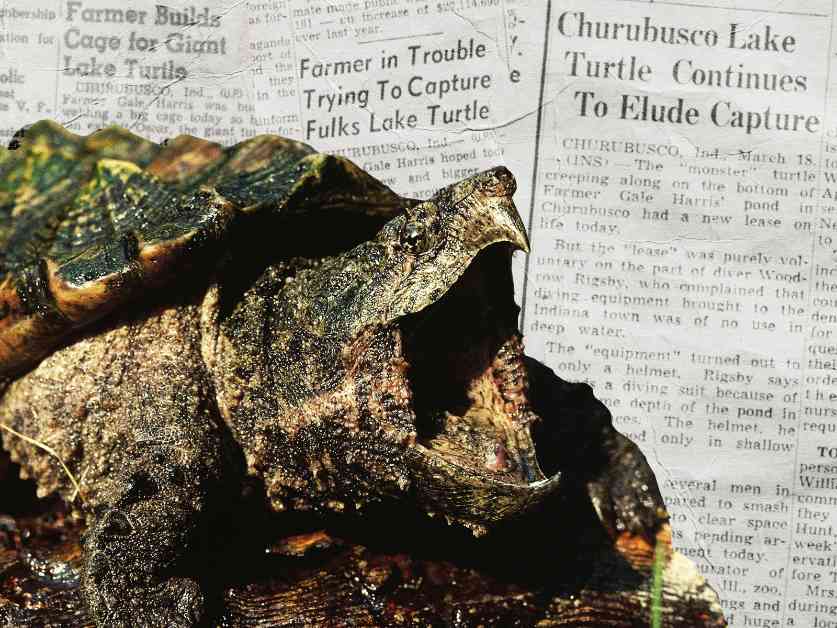In 1898, a farmer named Oscar Fulk claimed to have spotted a giant turtle the size of a small dinosaur in a lake on his property in Churubusco, Indiana. The creature disappeared for 50 years until two men, Ora Blue and Charley Wilson, reported seeing a massive snapping turtle in the same lake in 1948. They estimated the turtle to weigh over 500 pounds, sparking a wave of interest and earning the creature the nickname “Beast of Busco.” Despite numerous attempts to capture the turtle, it was never seen again.
Some experts believe that the creature could have been an alligator snapping turtle, the largest species of freshwater turtle in the US. However, the debate over whether these turtles could have ever inhabited Indiana continues. While some sightings support the theory, others believe it is unlikely that these turtles were ever in the state.
Moreover, the common snapping turtle, often mistaken for a large creature, is now facing threats due to environmental changes in Indiana. Governor Eric Holcomb’s decision to remove environmental safeguards for wetlands has led to the rapid loss of these crucial habitats. Additionally, the ruling by the U.S. Supreme Court has removed federal protections for isolated wetlands, further endangering the snapping turtle populations.
Despite the mystery surrounding the Beast of Busco, the story serves as a reminder of the importance of protecting wildlife and their habitats. Churubusco, now known as Turtle Town, USA, celebrates its turtle heritage annually at Turtle Days, where locals and tourists come together to honor the legend of the Beast of Busco. The town’s historical museum still displays artifacts from the original sightings, keeping the story alive for future generations.
In conclusion, while the true identity of the Beast of Busco may remain a mystery, the importance of conservation and protection of wildlife habitats is more critical than ever. As we continue to face environmental challenges, it is essential to recognize the impact of human activities on species like the snapping turtle and take steps to ensure their survival for generations to come.



